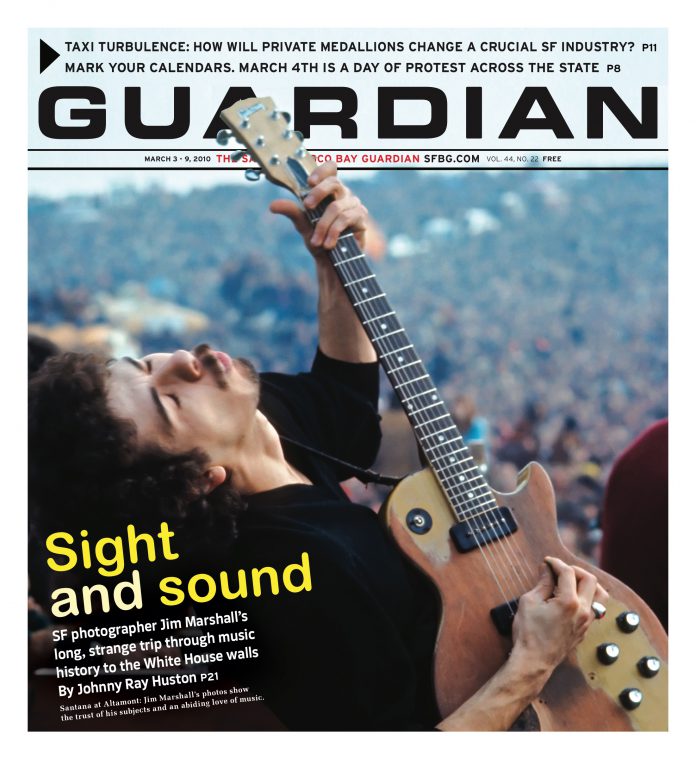paulr@sfbg.com
Success brings penalties as well as rewards, and if you are a successful cuisine in America, one of the penalties involves banality. Banality is the essence of mass culture. You are Italian food and everybody loves you, but Chef Boyardee puts you in a can and sells you from Wal-Mart shelves, and (just a bit higher up the shame scale) you can find yourself being dished out in hackneyed versions in hackneyed settings, squishy cannelloni in bland Bolognese sauce at quaint spots with tabletop candles set in empty bottles of cheap Chianti.
Yet there’s much to be said for the tried-and-true. Europe might be the Old World, but it also has its ultramodern dimensions. In my observations, the resolution of old and new has generally meant that the latter is fitted gracefully into the former, another piece of a puzzle being forever assembled. The American way is to raze whole blockfuls of hideous, shoddy buildings so a new generation of hideous, shoddy buildings can replace them. The past in America is as disposable as everything else, from razor blades to auto workers.
Specchio is a newish Italian restaurant in America (in our very own San Francisco, in fact), but it has the Euro-modern feel of a glam place in Milan or Barcelona. The embrace of the new is fervent and obvious; the name means “mirror,” with an implication of a dusty article you might find atop Granny’s chest of drawers, but Specchio’s interior design doesn’t emphasize mirrors and certainly not dust. There are, instead, textured concrete walls, concrete floors, a gleaming stainless-steel exhibition kitchen at the rear of the soaring main dining area, and spare furniture of a post-Bauhaus flavor. It is the sort of setting you would expect to be deafening even without people in it, but the noise, while not inconsiderable, is surprisingly well-managed. In this respect Specchio resembles Delfina.
The au courant setting does not quite prepare one for chef Gino Assaf’s poised, traditional menu. (Assaf grew up in Venice and was the chef at Gondola in North Beach for several years.) It’s the photographic-negative, or mirror, effect: a reversal, with the old as an inlay on the new. It has been many years, for instance, since I last tasted vitello al tonno — veal topped with tuna sauce, as classic an Italian dish in its way as spaghetti with meat balls — and that version had been made (with scaloppini-style cutlets) by a home-schooled Italian friend. Specchio’s version (part of a $48 prix-fixe) featured slow-roasted veal in thin slices, almost like carpaccio or bresaolo; these were laid like mats on a wide plate and topped with the creamy, caper-sharpened tuna sauce, pipings of crème fraiche, plenty of lemon, and a small garden of arugula leaves.
More thin-sliced flesh: salmon carpaccio (also a prix-fixe item), scattered with shreds of fennel root and green peppercorns and dressed with a lemon vinaigrette. This version was visually more arresting than the traditional beef interpretation — translucent orange salmon flesh trumping opaque red meat — but the overall flavor effect was less rich and tangy.
Lobster is overrated and problematic, and (for me) the less that’s done to and with it, the better. The flesh is best when plucked right from the shell, swabbed with a bit of butter, and eaten. So lobster ravioli in a lobster bisque sauce (again, prix-fixe) sounded as if it might be overwrought. It wasn’t. The meat inside the pasta pockets remained sweet and firm, with its distinctive tactility, while the creamy sauce was intense with crustacean essence. For a bit of color, the kitchen added asparagus coins.
Swordfish, as the meatiest of fish, needs no introduction and very little help — just some tabs of braised leek and grapefruit sections, say, atop a grilled steak (prix-fixe), itself seated atop a bed of roasted potato, zucchini, and red bell pepper. The leek and grapefruit made an unexpected and appealing combination: a fruity sharpness with an undertone of earth.
Complaining about tiramisù is almost as cliché as tiramisù itself, so I am pleased to report that Specchio’s tiramisù was as good as could be: moist but not soggy, with a nice balance between the competing charges of espresso and liquor. (The great weakness of tiramisù is too much booze, which leads to sogginess and drunk-breath.) Equally impressive, in the Italian tradition of classic simplicity, was a pat of lightly sweetened ricotta cheese topped with a syrupy strawberry reduction that was more fruit than sweet. It was like a small piece of cheesecake, with no crust. Is there a Chef Boyardee take on this? I hope not.
SPECCHIO
Dinner: Tues.–Thurs., Sun., 5:30–10:30 p.m.;
Fri.–Sat., 5:30–11 p.m.
2331 Mission, SF
(415) 958-5528
Wine and beer,
AE/DS/MC/V
Well-managed noise
Wheelchair accessible

